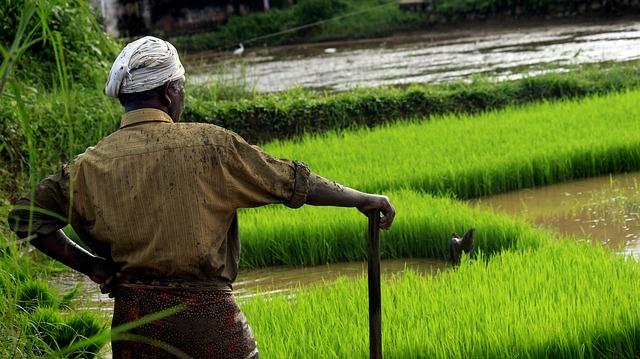
Just when lakhs of farmers marched to the nation’s capital demanding relief for their distress, another smaller set had assembled in Shirdi, Maharashtra. This was for the annual national conference of the Shetkari Sanghatana, founded by the late Sharad Joshi. The three-day conference coincided with the third birth anniversary of Joshi, whose name unfortunately is fast fading from public memory. It was Joshi who first pointed out three decades ago that the terms of trade were heavily tilted against the farmer. Busting the popular misconception that the farm sector in India is heavily subsidised, it was he who showed that indeed the farm sector was net taxed, not subsidised. Even the World Trade Organisation had to accept this revelation, and it has become an accepted maxim.
Despite assurance of a minimum support price that is 50 per cent above cost of cultivation, for 22 crops, the fact is that most prices are below cost. Additionally, there is a huge gap between what the farmer receives and what the city dweller pays for farm produce. That reflects the inefficiency of the supply chain, and perhaps monopolistic grabbing of the intermediate value by the middlemen.
Undoubtedly over the years, the terms of trade have shifted in favour of the farmer, but we are far from what would be socially optimal. The depressed food prices, seen in negative food inflation, are but a manifestation of this problem. Despite assurance of a minimum support price that is 50 per cent above cost of cultivation, for 22 crops, the fact is that most prices are below cost. Additionally, there is a huge gap between what the farmer receives and what the city dweller pays for farm produce. That reflects the inefficiency of the supply chain, and perhaps monopolistic grabbing of the intermediate value by the middlemen. The solution lies partly in tilting this balance toward the farmer, and partly in direct income support as well as structural reform.
The two different national assemblies of farmers in December represented two, almost radically different, approaches to their problems. One set was predominantly asking for more sops, debt relief, higher subsidies and greater government intervention. The Shirdi conference on the other hand passed a resolution for less government, greater freedom and unshackling the farmer. When in acute distress, and all other reforms are stymied or not functional, then loan waivers is the only palliative. It has negative consequences. It punishes those who worked hard to repay. It depletes the treasury. It sets up precedents and expectation of future bailouts. Most importantly, it does not reach half the farmers who either resort to moneylenders, or who are landless workers tilling the land as tenant farmers. Clearly, the lasting solution is not loan waivers, but structural reforms giving more economic freedom to the farmer, and large investment in infrastructure, including finishing the last mile incomplete projects.
Consider here the macro context. Agriculture provides only 14 per cent of national income, but still engages roughly half of the workforce. This means on average a worker outside of agriculture is earning three times the per capita income as compared to the farmer. Clearly then, the solution to farm distress lies outside of agriculture. If industry opens up large-scale jobs and livelihoods, then the farm workers can be weaned away. That calls for reforms like ease of doing business, of starting and shutting down enterprises, reducing the inspector raj and so on. It also calls for massive investment in urban infrastructure to accommodate the consequent influx of job seeking workers and their families. But while we wait for all of this to happen, we also need urgent reforms to unshackle the farmer. There are just far too many controls on prices, quantities, whom he can sell to, land transfers, land ceiling, futures trading and money lending. These have to go.
Farmer producer companies are a very promising innovation, which organise farm collectives into common stock companies. But they are still thwarted by burdensome taxation and license permit raj. The government needs to actively support the formation of these companies, and exempt them from all kinds of taxation. There are many developed countries where farmers do not live a life of penury and distress, and whose produce fetch decent prices.
Agriculture is a State subject, so there is a lot that State and local governments can do to bring in reforms. Besides for a large and diverse country we don’t need one-size-fits-all kind of solutions. Can we be bold enough to let the farmer sell his land to whoever he pleases? Can we allow conversion to non-agricultural land use without a bureaucratic heavy hand and attendant corruption? How about completely removing restrictions on export of farm produce?
Over the years, there has been strong growth in farm related activity of animal husbandry, which includes poultry, dairy and cattle. But beef politics have put a dent in this growth. India used to be the largest exporter of beef (which is buffalo meat), but vigilantism means even legitimate meat trade would rather shrink away than take on these elements. Farmer producer companies are a very promising innovation, which organise farm collectives into common stock companies. But they are still thwarted by burdensome taxation and license permit raj. The government needs to actively support the formation of these companies, and exempt them from all kinds of taxation.
There are many developed countries where farmers do not live a life of penury and distress, and whose produce fetch decent prices. Even in India, the Amul revolution is a demonstration of how to tilt the balance in favour of the farmer. We need to learn from and emulate such successes.
(The writer is an economist and Senior Fellow, Takshashila Institution)



